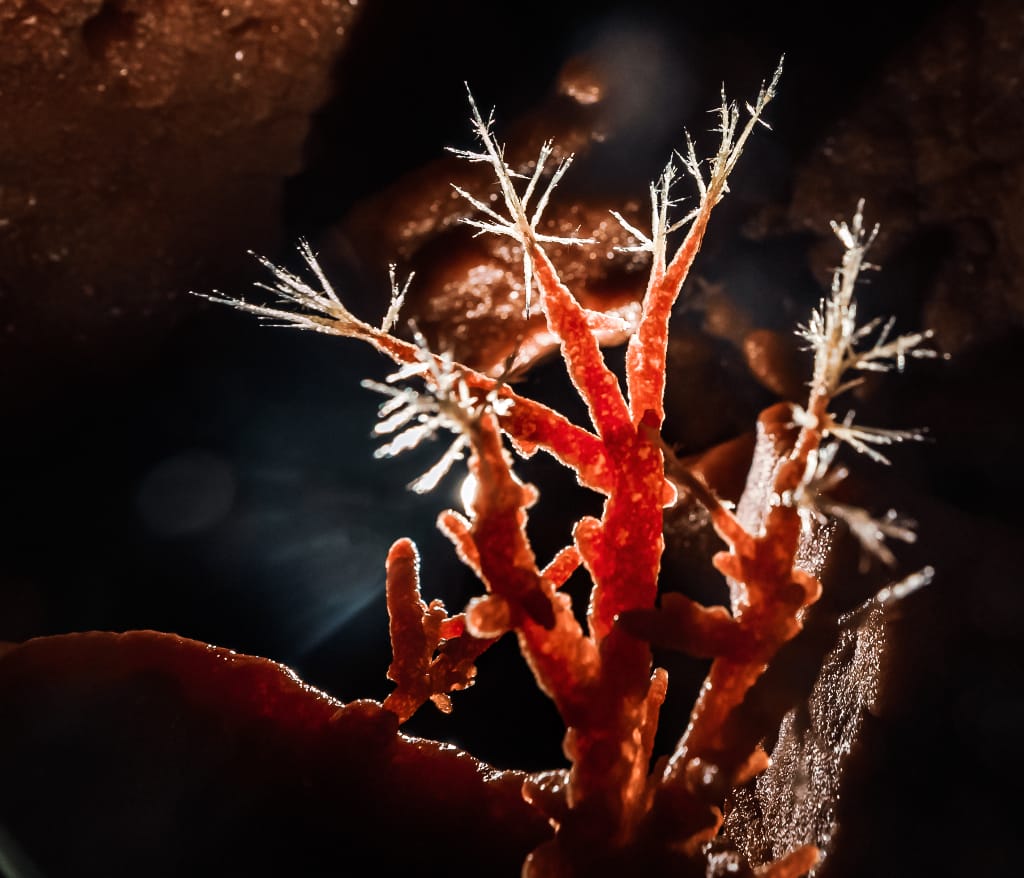Caving with Hennessy Hammock

Hennessy Hammocks have been valued as caving equipment since our beginnings. Ultralight, durable, and comfortable, caving with a hammock makes home camp simpler and drier.
We continue to sponsor some of the most exciting caving expeditions in the world. These are not only scientific expeditions, but heroic undertakings defined by extreme difficulty and effort. We honour these explorers, and are gratified that they rely on our hammocks to make what they do possible.

photo: Kasia Biernacka
2021: Sistema Cheve Extended
The Cheve project has been connecting this remote system of caves in Oaxaca Mexico for 30 years, by diving the sumps, and the mapped area is getting so huge that the expedition spent very long times camped in the caves, on average going a month without seeing the sun. Just getting to camp 7, twelve kilometers in, is a five-day trip for a fit caver, each way. The logistics of moving any gear through the caves was enormous, so the light weight and compact portability of the Leaf Lounger was crucial.
The 2021 expedition involved 69 cavers, 3100 person-days, and a chain of eight underground camps. They succeeded in adding *over 20 kilometers* of caves to the map, now totalling around 77 kilometers (48 miles). This expedition also pioneered new underground communication techniques, and of course, they relied on their Hennessy Hammocks for rest and refuge. [photo]
Visit the United States Deep Caving Team site

photo: Kasia Biernacka
2018: Return to Sistema Cheve
Hennessy Hammock sponsored the Huautla Cave Diving Expeditions as they explored the vast cave systems in Oaxaca, Mexico. We supplied them with Leaf Lounger hammocks, perfect for cave expeditions. Here's a report they sent back, with some background:
In 1984, a team of cave divers led by Dr. Bill Stone of the U.S. Deep Caving Team explored a remote resurgence in the Mexican state of Oaxaca. This world-renowned cave is known as Cueva de la Peña Colorada. Over three months the 1984 team successfully explored roughly 5km into the mountain, requiring them to tackle several sumps (I.e. water-filled cave passages which can only be explored by cave divers), until they were stopped in Sump VII. This sump quickly reached a depth of over 50m, and due to the diving equipment available at the time they quickly hit the logistical limits and were forced to return. Nevertheless, they reported a large passage continuing north underwater, leading them to believe that this cave might connect to another system high on the mountain. It is known as Sistema Huautla, one of the deepest and most spectacular cave systems on the planet. It was this expedition which established the first subterranean camps beyond a sump in the history of caving, where the camps were used in a similar way mountaineers use staged camps to ascend some of the world's highest peaks.
It was only this year, in 2018, that a team attempted the immense logistical challenge to return to Sump VII and continue exploration. To be successful and push beyond the limits of the 1984 expedition, we had to again establish two camps - the first one beyond the first two sumps and located on a nice sandy beach. The second one was located beyond the 5th sump, in a much more unfriendly part of the cave. This camp was located next to the 55m vertical drop leading to Sump VII, in a narrow passage with large boulders covering the floor and hence no flat place to sleep. The only solution to this dilemma was to use hammocks, to sleep hanging above the large boulders. Luckily we had several Hennessy Hammocks with us on this trip which packed light enough to be transported 5km into the mountain, both above and below water, and tough enough to survive the rough trip into the cave. These hammocks also provided the comfort for the exploration divers, and their support crew, to get a good rest at camp before attempting some of the most remote cave diving exploration on the planet.

During the two-month long expedition the Hennessy Hammocks worked exceptionally, with every single hammock surviving the harsh conditions in the cave. Thanks guys for providing such a great product!
Andreas Klocker, co-expedition leader, Huautla Cave Diving Expeditions
www.beyondthesump.org
www.facebook.com/CaveDive

Why the Leaf Lounger?
Hennessy Hammock staff worked with the caving team to meet their exacting needs for such an extreme expedition. The Leaf Lounger, with a few modifications, was perfect for the job.
First, they needed something truly ultralight to carry such a long distance, and packs up into a tiny volume, to help with squeezing the gear through narrow passages. The Leaf Lounger comes in at half a kilo, and about the size of two fists.
They had no need for bug netting or rainfly, so the Leaf already needed no modifications there. (Note that the photo above has orange-coloured Leaf Loungers as well as the standard 'cactus green', by special request for visibility safety considerations.)
It's extremely important in a cave that the fabric of the hammock sheds water and dries easily, as everything has a tendency to get wet at some point in the 100% humidity. The 70d nylon taffeta of the Leaf works well here.
Hennessy Hammocks are the best sleeping system in caves because the structural ridgeline provides the exact same comfortable bed, every night, above the wet and uneven floor of the cave. Since there are no trees to protect in a cave, the expedition left the webbing straps out and instead attached the ropes to pitons in the cave wall (see photos above).
The exhausted team couldn't afford the energy to worry about unreliable gear or hammocks sagging into the rocks below, so they were glad to be using Hennessy hammocks supported by a light but strong 1500 lb. / 680 kg test polyester rope.
We continue to support extreme adventurers around the world, by making the best designed hammocks to the most rigorous standards, and we look forward to further discoveries from the Sistema Huautla explorations!

photos courtesy of beyondthesump.org
2003/2004: Sistema Cheve
The first time we supported the US Deep Caving Team, they used a modified Explorer Ultralite Zip, and sent this back:
Dear Tom... we would like to take this opportunity to thank Hennessy Hammock for being a corporate sponsor of the US Deep Caving Team's 2003 and 2004 Sistema Cheve Expeditions.
Briefly, in 2003, the team was able, during the course of the 3 month expedition, to reach a depth of -1,484 meters in Cueva Cheve at a distance of 9.3 kilometers from the nearest entrance. The depth represents the deepest cave in the Western Hemisphere and the 9th deepest in the world. The traverse distance, however, establishes the present limit of exploration in Cueva Cheve as the most remote point humans have ever reached inside the planet. The fact that 450 meters of underwater tunnels - beginning at the -1,362 meter level - must be negotiated to reach this point places it as one of the most remote points humans have ever reached inside the planet.

We made extensive use of the Hennessy Ultralight hammocks on both expeditions. To cut weight we stripped out the insect netting (no bugs underground!) and left the rain flies on the surface (no rain underground unless you are under a waterfall). That allowed us to pack the hammock inside a 1 liter Nalgene wide mouth bottle, which made them highly transportable and kept them dry for when we were ready to crash for the night...In 2003 the hammocks were used by the advance rigging team, which kept them moving forward into the cave in one movement...I would recommend these hammocks to anyone doing expeditionary work. They are tough, lightweight, and compact. And they are surprisingly comfortable...
Bill Stone, Leader 2003 & 2004 Sisteme Cheve Expeditions.

photo: Kasia Biernacka
 USA
USA
 CA
CA EU
EU UK
UK AUS/NZ
AUS/NZ






